Try Default

See how revenue teams automate revenue operations with Default.

Key Takeaways
- Default is best for RevOps teams that want to automate routing, enrichment, and follow-up using any intent signal. It activates the data you already have to drive pipeline, no engineering required.
- ZoomInfo suits enterprise sales and outbound teams needing real-time contact enrichment, firmographic filters, and deep account coverage at scale.
- 6sense is ideal for mature ABM orgs running predictive campaigns and aligning outbound, ads, and nurture around buying-stage signals.
- Dealfront (ex-Leadfeeder) fits SMBs and mid-market teams that need fast, IP-based visibility into anonymous website visitors — with low lift and no enterprise complexity.
Intent signals don’t drive revenue. Activated signals do.
Most GTM teams are sitting on great data — Surge scores, visitor intel, job changes, enrichment hits — and still losing pipeline. The problem isn’t the provider. It’s the follow-through.
This guide breaks down the 15 best B2B intent data providers in 2025, based on how real teams use them to:
- Identify in-market accounts before the competition
Route leads instantly based on fit and rep availability - Convert anonymous web traffic into pipeline — automatically
You’ll also see where Default fits in — not as a data provider, but as the activation layer that turns any signal into meetings, enriched records, and pipeline. No dev time. No leads lost.
B2B intent data tools comparison table
Default: Best B2B sales workflow automation tool
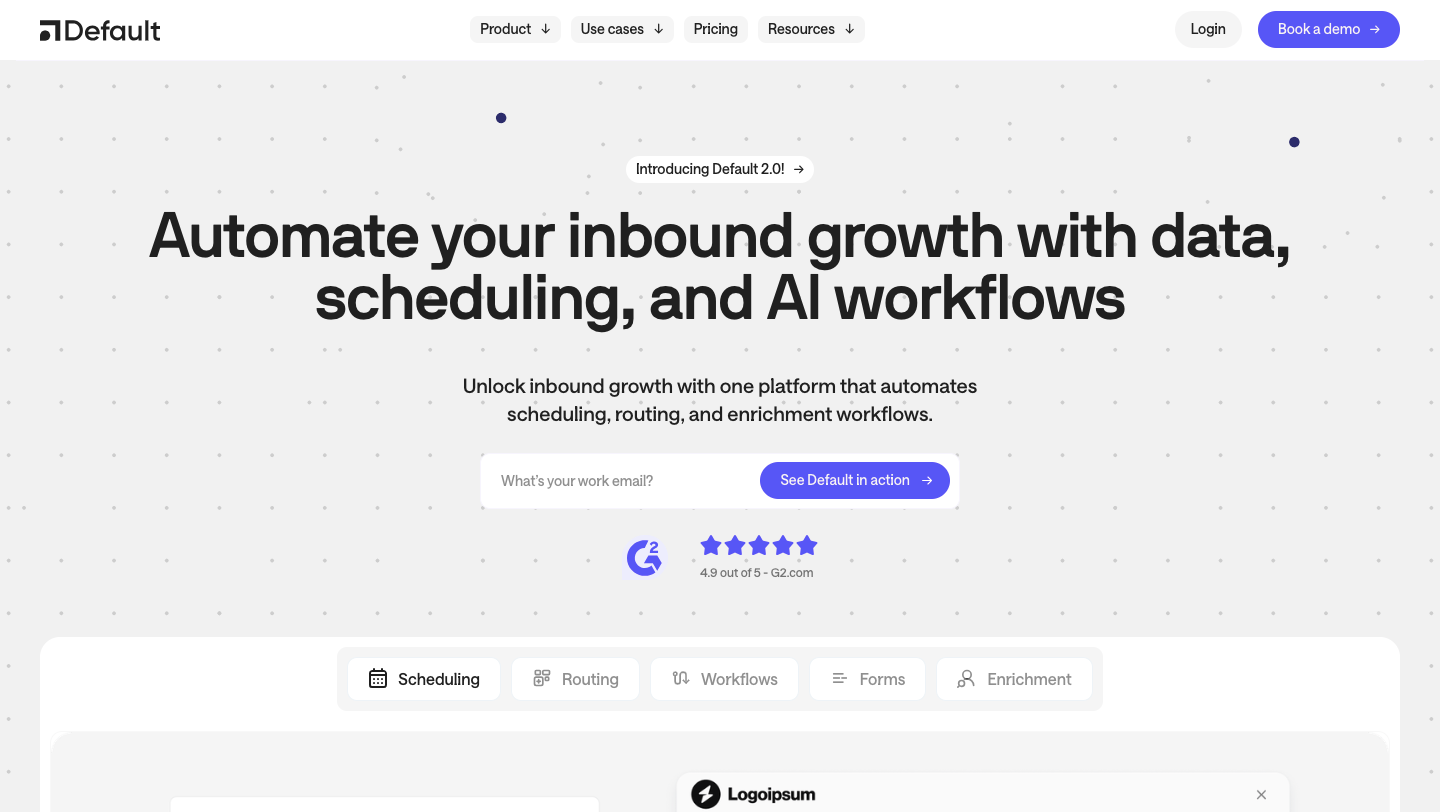
The #1 problem with intent data isn’t getting it (as you’ll see below); it’s doing anything useful with it. Most GTM teams buy great signals, then leave them stranded in spreadsheets, stale CRMs, or disconnected tools.
Default fixes that. It’s your ops engine — automating routing, enrichment, ownership, and handoffs across the full lead lifecycle.
Intent providers surface signals. Default turns them into outcomes. It connects to your CRM, enrichment stack, and lead sources — transforming raw data into qualified pipeline, no dev time needed.
Key features
Here’s how Default turns intent data into pipeline — without relying on engineers:
No-code GTM workflow builder
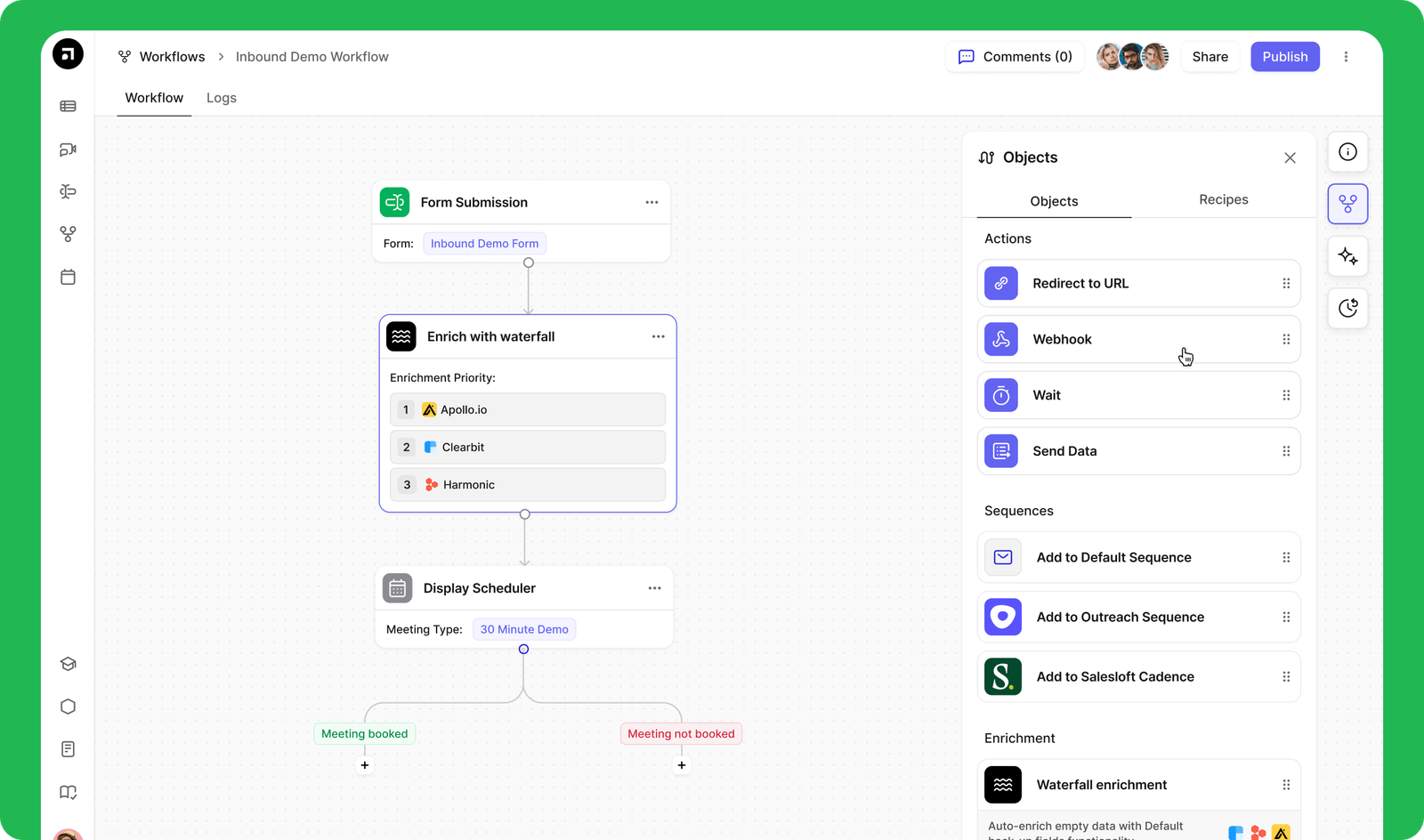
Design full-funnel workflows using drag-and-drop logic — from signal ingestion to CRM update to meeting booked. Route leads by geo, firmographics, score, or rep availability — all without writing a single line of code.
Real-time enrichment & CRM sync
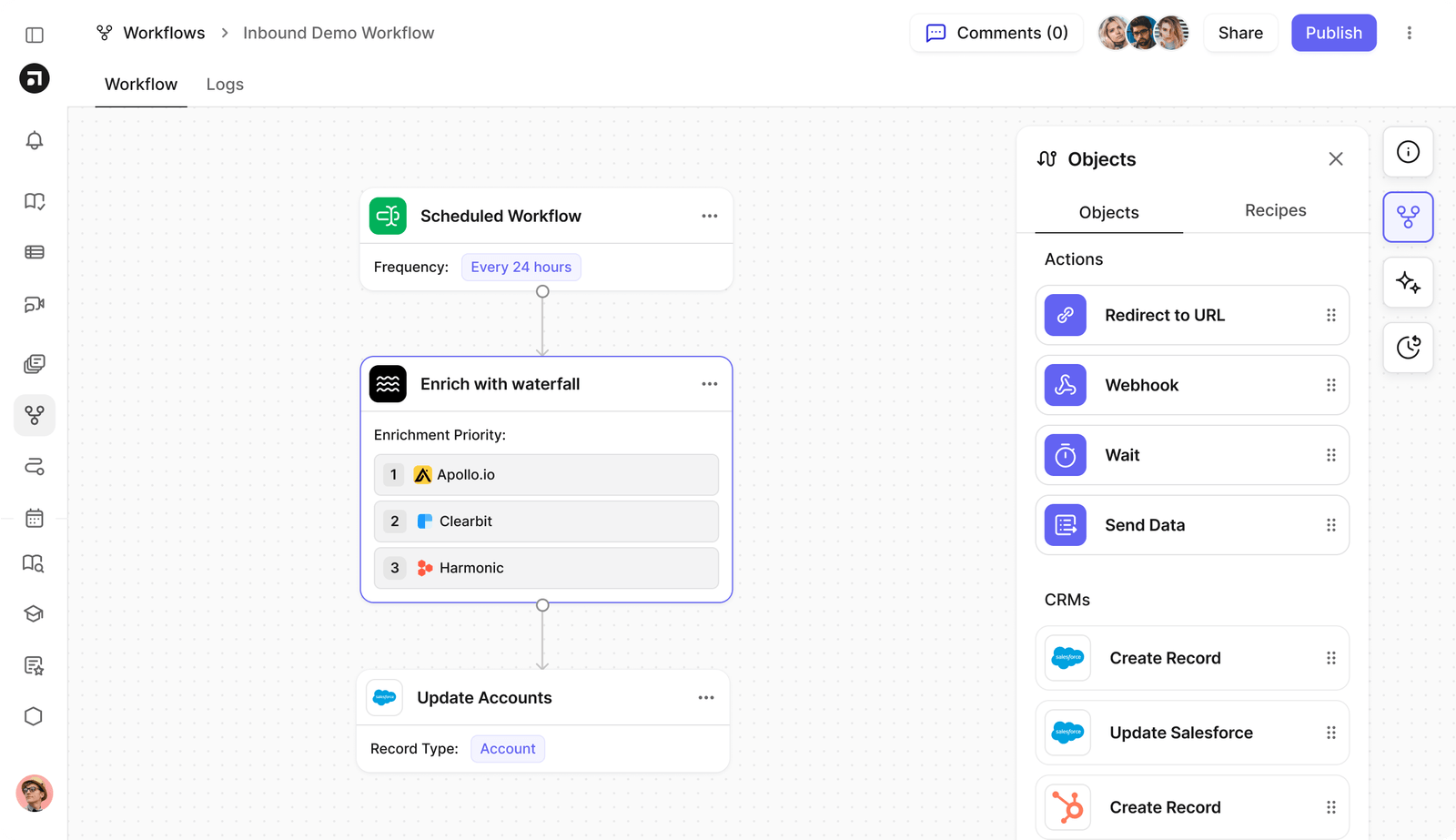
Default integrates with providers like ZoomInfo, Clearbit, and Apollo to enrich leads instantly. It then syncs that clean data into your CRM in real time, improving rep speed-to-lead, segmentation, and attribution.
Ownership-aware lead routing engine
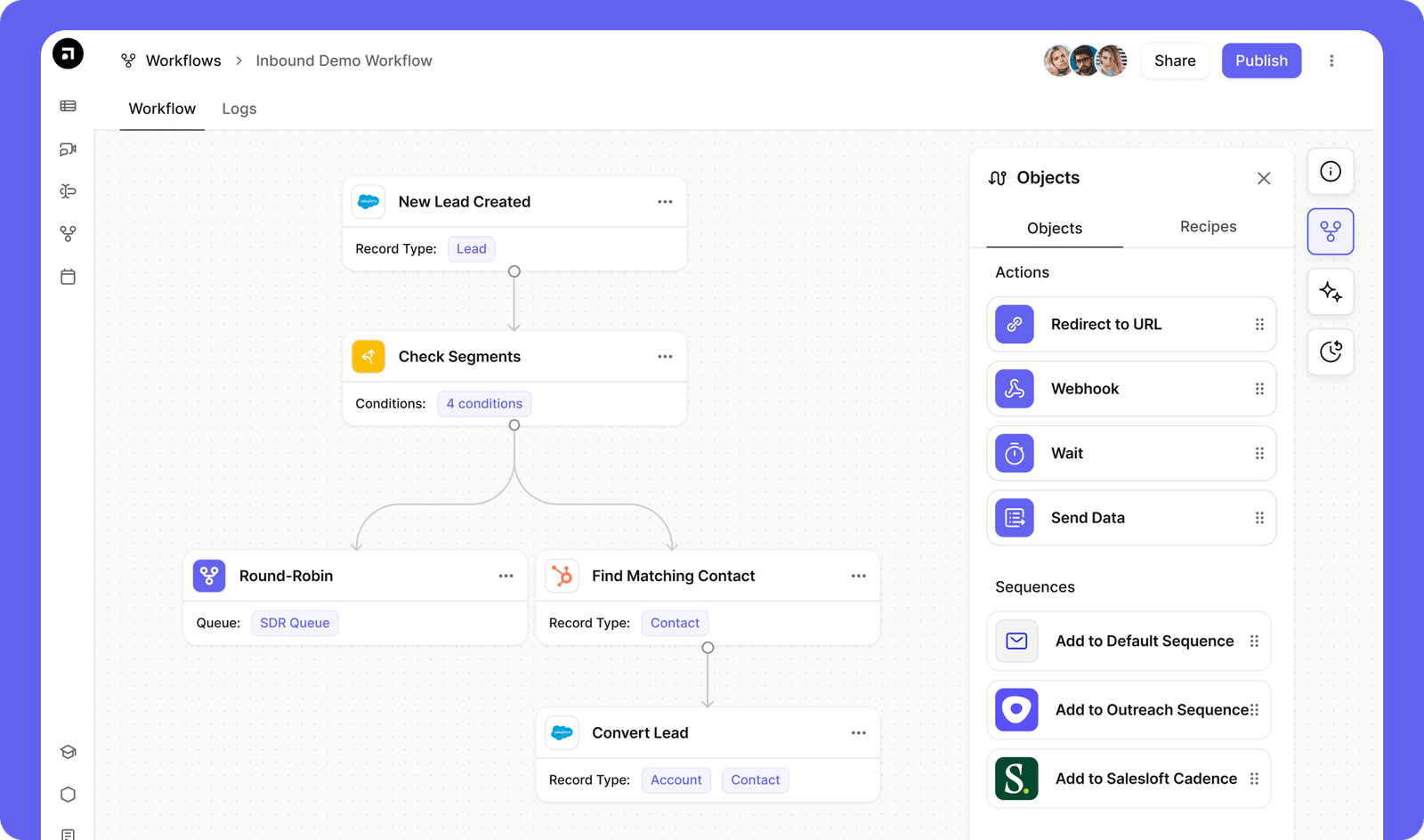
Leads are automatically assigned based on rep capacity, territory, deal stage, or custom logic — all while respecting current CRM ownership rules. That means fewer duplicates, no cherry-picking, and faster follow-up.
Pricing
Note: Default’s pricing includes both a platform fee and a license fee. You only pay for users who actually receive meetings, are assigned as owners in your CRM, or are referenced in workflows. All editor seats are free, making it highly scalable for large GTM teams.
Where Default shines
- Workflow activation without engineers: Everything is no-code — even complex routing and SLAs.
- Stack-agnostic ops layer: Works with Salesforce, HubSpot, Clearbit, ZoomInfo, and more.
- Stops lead leakage cold: From form-fill to rep — no gaps, no delays, no bad data.
Where Default falls short
- Doesn’t sell data: If you need to buy intent, use providers like Bombora or Apollo — then plug them into Default.
- Initial logic setup required: Ops teams need to define workflows, SLAs, and assignment rules.
Customer reviews
“Default has a great process to build unique flows that go beyond just calendar booking. Sure, they do that. But they're also a data integrator. Think Lean Data mixed with Chili Piper mixed with Clay all wrapped up in one solution.” - Joseph B., verified G2 reviewer
“The product is stunning and makes creating forms, meeting schedulers, and workflows that interact with CRMs seamless.” - Garrett W., verified G2 reviewer
Who Default is best for
- RevOps leads: Need pipeline reliability without dev bottlenecks
- GTM strategists: Sitting on great data, but struggling to activate it
- SDR/BDR managers: Tired of lost leads, slow follow-ups, and rep misalignment
Don’t let high-fit leads stall in your CRM.
Default turns intent signals into qualified pipeline — enriched, routed, and followed up on instantly.
Book your demo to see how it works in your stack.
ZoomInfo: Best for high-scale sales and enrichment-led GTM teams
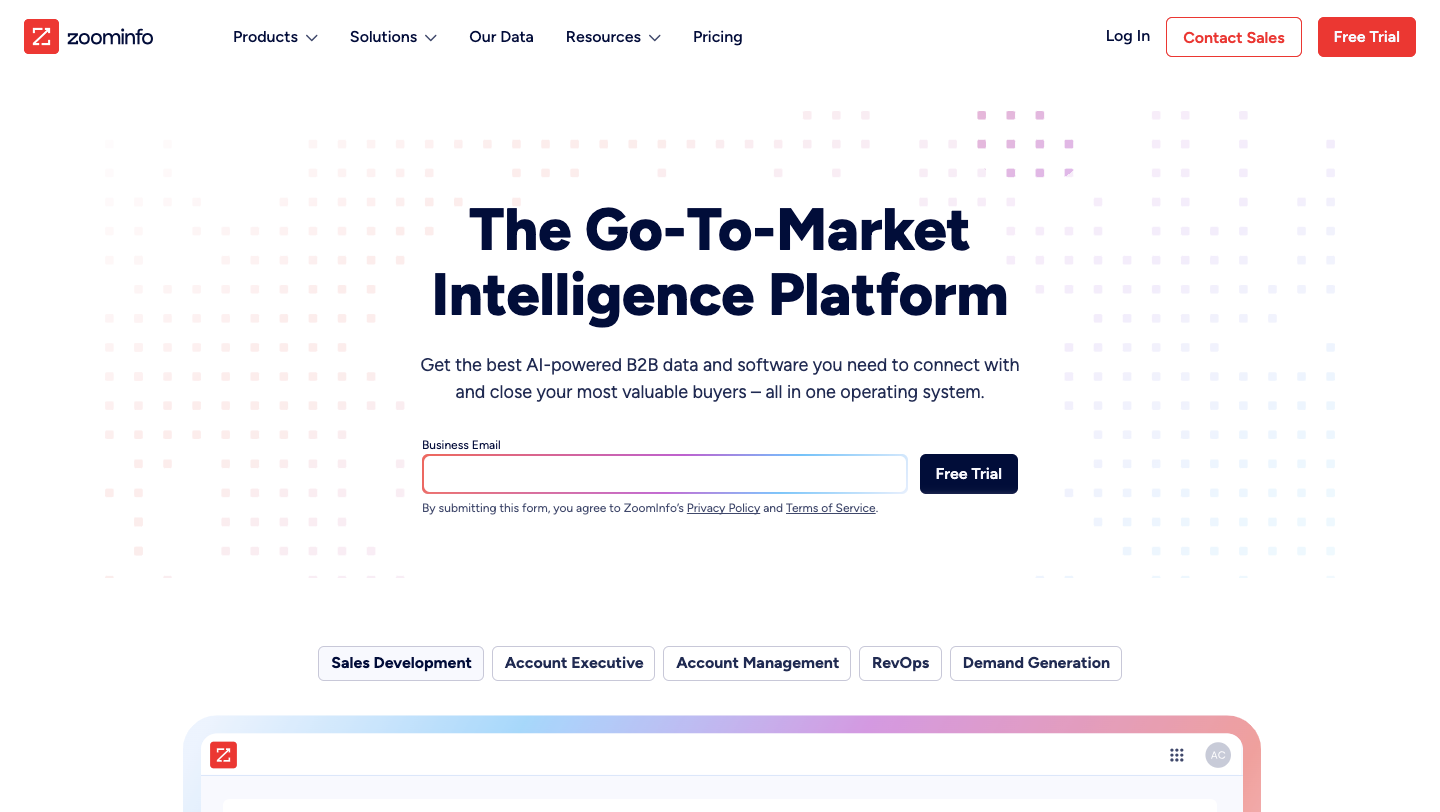
ZoomInfo still sets the standard when it comes to B2B data at scale. If you're running high-volume outbound or fueling intent-informed ABM, it’s likely already in your stack — and for good reason.
The draw isn't just the contact database (massive), it’s the always-on enrichment, firmographic filters, and constant drip of intent signals across accounts you care about.
But here’s the catch: having the data doesn’t mean you’re doing anything with it. ZoomInfo gets you the “who” — but if you’re not routing leads, enriching CRM records in real time, or alerting reps when timing is right, that signal dies on impact. That’s where Default comes in.
Key features
- Company Surge® intent data: Tracks research trends across thousands of web topics to flag in-market buyers at the account level.
- Real-time enrichment engine: Auto-fills CRM records with accurate firmographic and contact info across territories.
- Native CRM/MAP integrations: Syncs with Salesforce, HubSpot, Outreach, Marketo, and others for near-instant GTM alignment.
- Workflow builder: Allows basic scoring and enrichment automations inside the platform.
Pricing
Note: ZoomInfo doesn’t display standard pricing as it offers custom quotes based on company size and use case. However, all plans include intent data capabilities.
Where ZoomInfo shines
- Massive data footprint: Covers millions of contacts across roles, industries, and geos.
- Best-in-class enrichment: Clean, automated CRM fills with high match accuracy.
- Always-on intent: Fuel for outbound, ABM, and nurture flows — without waiting on form fills.
Where ZoomInfo falls short
- Expensive for mid-market teams: Bundled features and seat-based pricing drive up TCO quickly.
- Inconsistent global data: Coverage drops off in certain EMEA and APAC regions.
- Workflow activation is limited: You’ll still need tools like Default for routing, SLAs, and advanced lead logic.
Customer reviews
“ZoomInfo has an extensive and frequently updated database which provides extremely accurate contact information, company insights, and intent data. It is very easy to utilize and understand.” - Heather H., verified G2 reviewer
“I dislike that it can be difficult to search for a prospect within the ZoomInfo interface, and that the search has to be exact or else ZoomInfo doesn't tend to pull similar or close-to results.” - Alexa G., verified G2 reviewer
Who ZoomInfo is best for
- Enterprise RevOps leaders: Who need high-volume, enriched contact and company data to power large GTM motions.
- Outbound sales teams: That rely on accurate, always-fresh contact info to maintain prospecting velocity.
- ABM strategists: Using Surge signals to prioritize outreach based on behavioral indicators.
6sense: Best for ABM teams and predictive GTM strategies
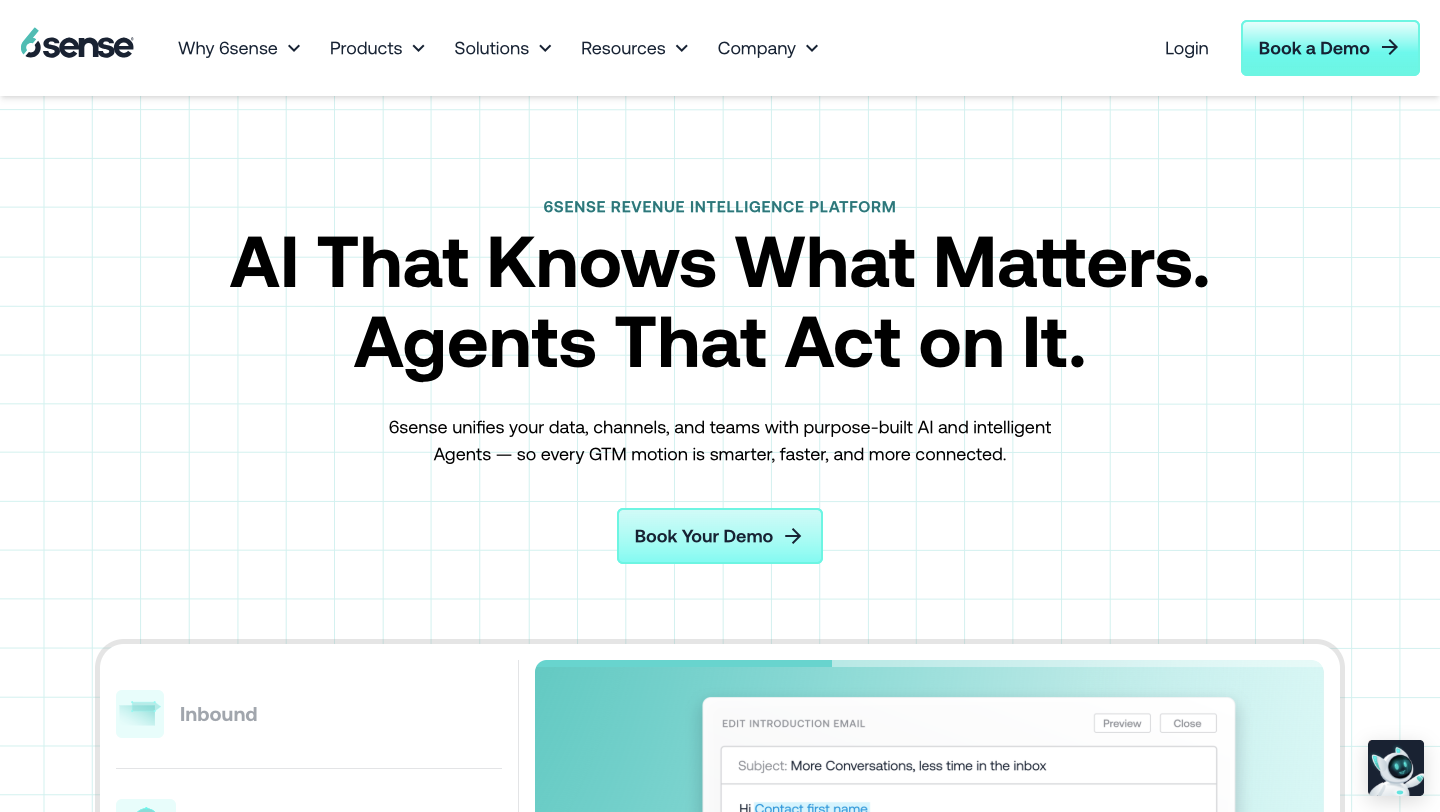
6sense isn’t just another intent tool — it’s the one predicting where buyers are in their journey, before your reps even reach out. For enterprise ABM teams, it’s the go-to when you want to know who’s heating up, and how soon to strike.
It maps accounts to funnel stages, runs AI playbooks, and helps orchestrate outbound, ads, and nurture flows around timing — not just fit.
But one thing it's well worth noting: even with all that intelligence, it won’t route a lead, trigger an SLA, or update your CRM on its own. You’ll still need something like Default to connect the dots between signal and pipeline.
Key features
- Buying-stage predictions: AI determines if an account is in awareness, consideration, or decision stage — based on multi-source engagement.
- Multi-channel orchestration: Aligns sales and marketing actions across outbound, email, ads, and content.
- ICP + technographic layering: Scores accounts by fit using firmographics, web behavior, and installed tech.
- Deep native integrations: Hooks into Salesforce, HubSpot, Outreach, and Marketo for seamless GTM alignment.
Pricing
Where 6sense shines
- Best-in-class predictive scoring: Ideal for teams needing stage-based targeting instead of just raw traffic alerts.
- Full-funnel orchestration: Enables coordinated action across ads, SDRs, and nurtures — aligned to buyer journey.
- GTM visibility: Helps RevOps identify drop-offs and inefficiencies across the entire funnel.
Where 6sense falls short
- Not plug-and-play: AI models require setup, CRM alignment, and ongoing tuning.
- Pricey for lean teams: Designed for enterprise — not ideal for mid-market or early-stage orgs.
- Lacks native lead automation: Still needs a tool like Default to handle CRM triggers, routing, or meeting booking.
Customer reviews
“I like the way it presents the data of different intent based accounts, share some insights about the geographical segments for better outreach.” - Khalid J., verified G2 reviewer
“It is not very user-friendly and has a lot of weird quirks. It is missing a lot of customization and functionality that would make it much easier to use across teams.” - verified G2 reviewer
Who 6sense is best for
- Enterprise ABM teams: Orchestrating multi-touch campaigns and prioritizing actions based on buying stage.
- RevOps leaders: Looking for predictive visibility into pipeline stages and gaps.
- GTM strategists: Coordinating outbound, ads, and content with unified intent intelligence.
Clearbit: Best for real-time enrichment and anonymous visitor intelligence
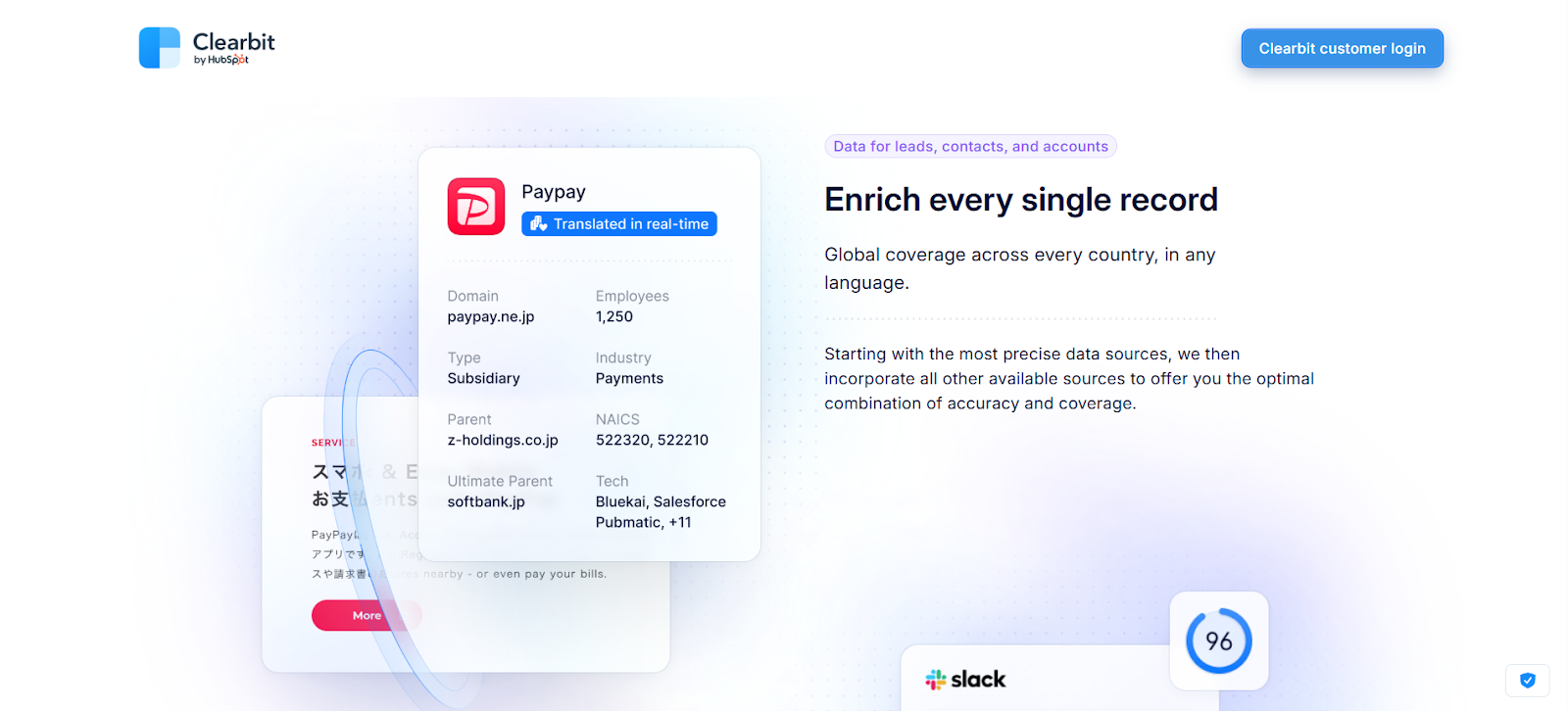
Clearbit helps GTM teams turn anonymous traffic into sales-ready leads — in real time. Instead of waiting on form fills or static list uploads, Clearbit identifies web visitors, enriches lead data instantly, and powers dynamic alerts or personalization across your stack.
It’s especially powerful for inbound-heavy orgs looking to speed up qualification, reduce form friction, and trigger SDR action the moment high-fit accounts engage. While it doesn’t offer full third-party intent like Bombora, Clearbit excels at on-site intelligence, and when paired with Default, it becomes an activation engine.
Key features
- Reveal API: Maps anonymous IPs to firmographics instantly — enabling sales alerts, personalization, or segmentation without form fills.
- Real-time enrichment: Auto-fills forms, CRMs, and MAPs with company, role, industry, and technographics.
- Slack and CRM alerts: Notifies reps when high-fit accounts re-engage or visit key pages.
- Form optimization: Shortens lead capture with dynamic pre-fill and smart enrichment rules.
Pricing
Where Clearbit shines
- Fastest signal-to-action for inbound: Uncovers warm traffic before forms are submitted.
- Easy to implement: Setup is low-lift for most RevOps and web teams.
- Plays well with MAP and CRM stacks: Great for pairing with Segment, Salesforce, and HubSpot.
Where Clearbit falls short
- No off-site intent: Doesn’t capture buying behavior across the wider web.
- Not ideal for outbound: Lacks the depth of firm-level insights needed for cold outreach.
- Needs ops tooling for routing: You’ll want Default or similar tools to turn alerts into booked pipeline.
Customer reviews
“Excellent resource for finding accurate business emails - when the product had record of the company/employees, the email was almost always accurate leading to a successful delievered email.” - verified G2 reviewer
“It’s a little overwhelming to try and decide what to use, and where. Lots of options!” - verified G2 reviewer
Who Clearbit is best for
- Growth-stage inbound teams: That want to enrich and activate web traffic without a heavy engineering lift.
- RevOps and Demand Gen leaders: Focused on speed-to-lead and dynamic site personalization.
- Sales managers: Looking to alert reps when key accounts engage, without waiting for form data.
Bombora: Best for content-driven ABM and topic-level intent tracking
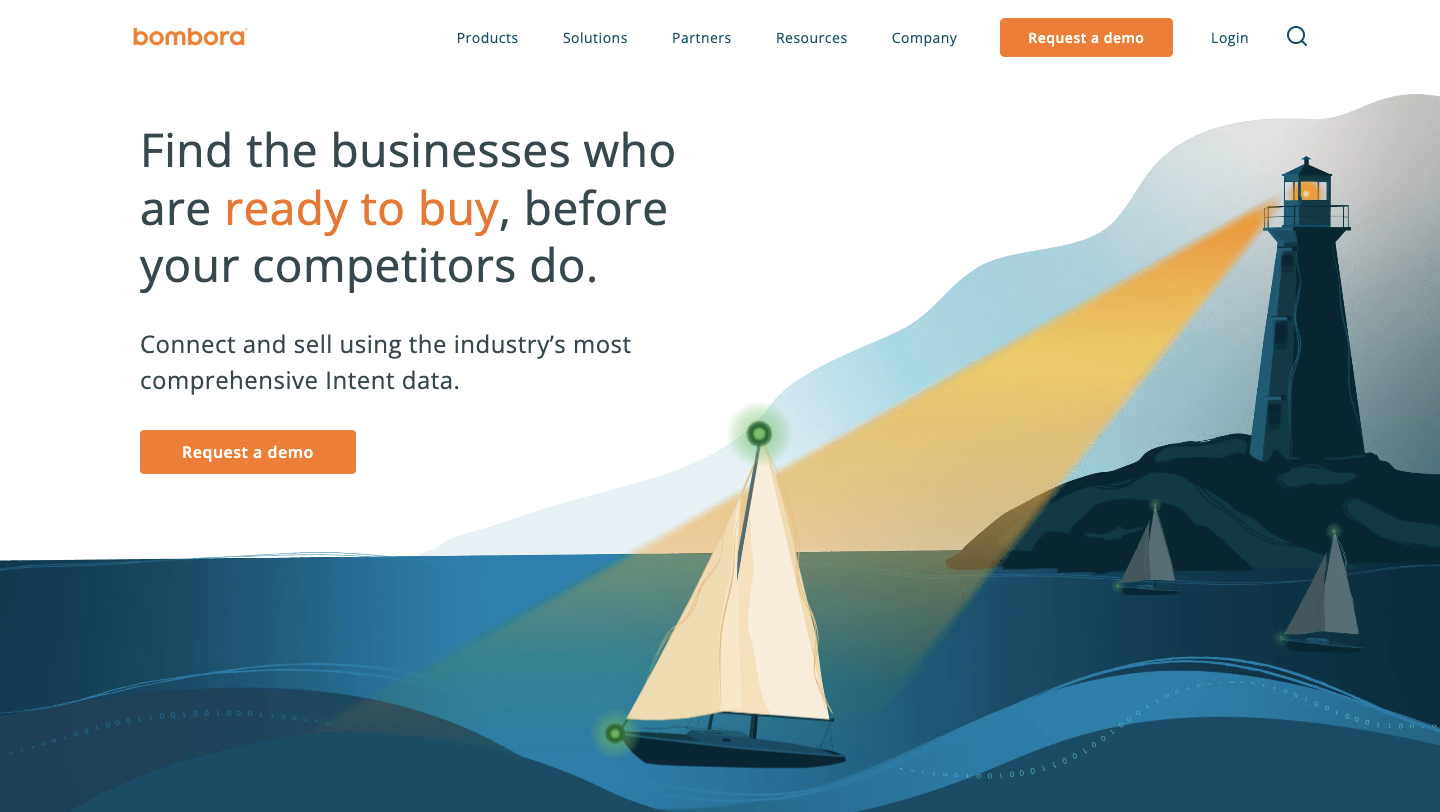
Bombora was the first to make third-party intent signals mainstream — and it’s still the go-to for demand gen, content marketing, and early-stage ABM. Its Company Surge® scores track what accounts are researching across 5,000+ B2B topics, even if they’ve never landed on your site.
That makes it great for surfacing top-of-funnel interest. But interest alone isn’t pipeline. Unless you're enriching, scoring, and routing those accounts in real time, most signals go nowhere.
That’s where Default comes in. Bombora shows you who's in-market. Default moves them through the funnel — cleanly, automatically, and without rep guesswork.
Key features
- Company Surge® Scores: Tracks account-level research surges on relevant B2B topics (e.g., "sales automation").
- Custom topic modeling: Select from 10,000+ topics or define your own intent taxonomies aligned to GTM themes.
- MAP and CRM integrations: Push Surge data into Salesforce, HubSpot, or Marketo to trigger campaigns or scoring rules.
- Audience builder: Segment and prioritize accounts based on surge strength, vertical, region, or company size.
Pricing
Where Bombora shines
- Ideal for top-of-funnel GTM: Surfaces early-stage interest — before buyers hit your site.
- Third-party behavioral data: Unlike tools tied to your own domain, Bombora casts a wider net.
- Strong alignment for ABM + content ops: Great for prioritizing outbound, tailoring campaigns, or scoring account interest.
Where Bombora falls short
- No contact-level signals: Company-level only — you’ll still need enrichment tools to find buyers.
- Not a standalone GTM tool: Needs Default (or similar) to operationalize signals across CRM and sales workflows.
- Requires upfront topic planning: Value depends on GTM alignment and thoughtful taxonomy setup.
Customer reviews
“I like that it helps me to target certain accounts right away without having to do as much research on my own.” - Dylan S., verified G2 reviewer
“Lack of high-quality company data makes Bombora almost useless. If you are trying to focus on specific industries and company sizes the Bombora database is really bad.” - Eric S., verified G2 reviewer
Who Bombora is best for
- Demand gen and content marketers: Building early-stage awareness and segmentation strategies.
- ABM teams: Targeting known accounts based on topic-level buying signals.
- RevOps strategists: Who want to layer behavioral data on top of firmographic and enrichment logic.
Dealfront (ex-Leadfeeder): Best for SMBs and mid-market teams identifying anonymous web visitors
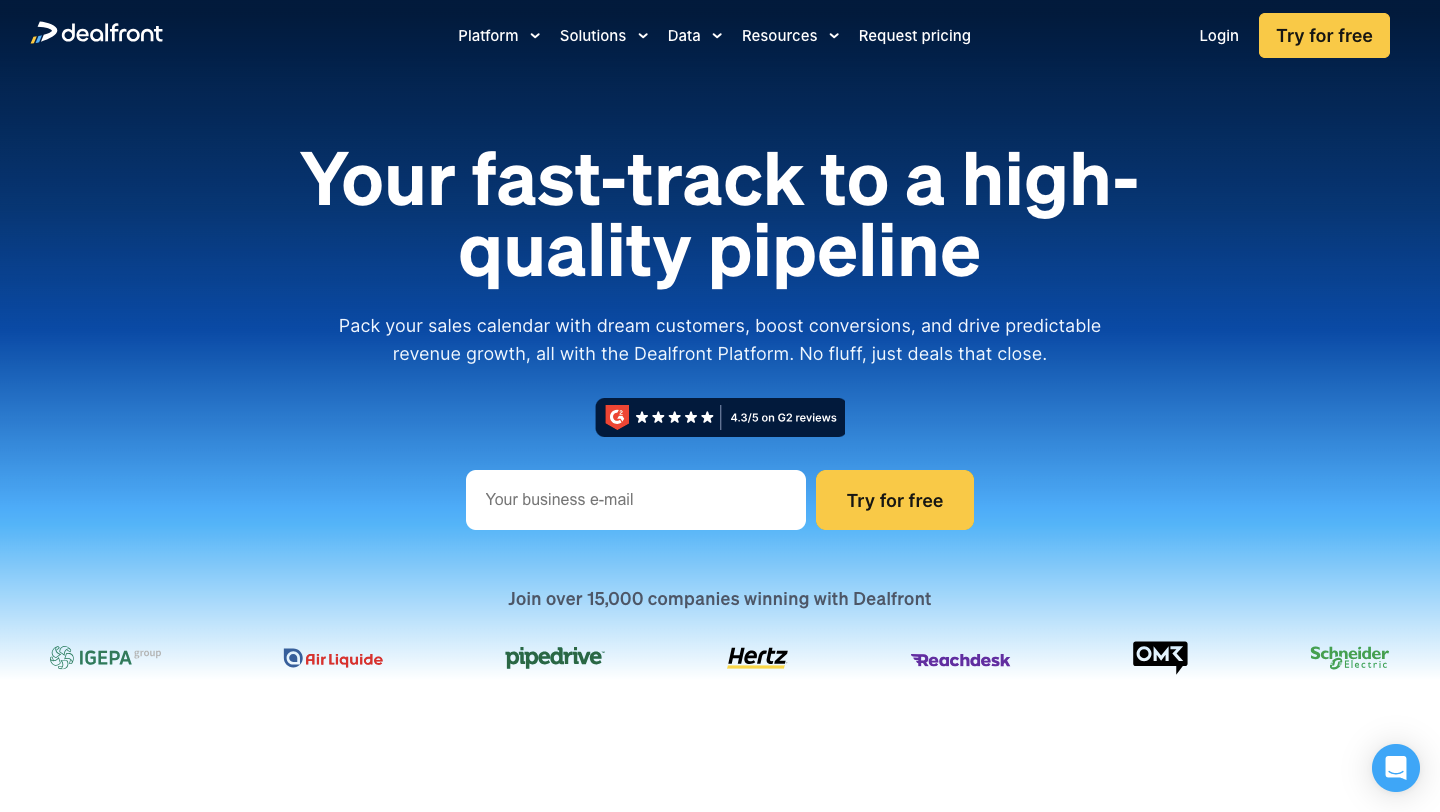
Previously known as Leadfeeder, Dealfront helps small to mid-sized GTM teams uncover which companies are visiting their site, even without form submissions. Through IP-to-company resolution, it gives RevOps, marketing, and SDR teams the tools to identify, score, and act on web traffic in near real-time.
Unlike broader third-party intent providers, Dealfront is built for teams already generating inbound traffic who want to prioritize follow-up, without the overhead or cost of enterprise-grade platforms. Pair it with Default, and that traffic becomes instantly enriched, routed, and meeting-ready.
Key features
- IP-to-company visitor mapping: Automatically surfaces visiting companies, even if they remain anonymous.
- Firmographic filtering: Sort web visitors by industry, size, location, behavior, and custom tags.
- Lead alerts + scoring: Create workflows to score visits and alert reps when target accounts engage.
- CRM and Slack integration: Push high-fit accounts directly into HubSpot, Salesforce, or Slack in real time.
Pricing
Where Dealfront shines
- Perfect for inbound-heavy SMBs: Turns site traffic into warm leads fast — without expensive infrastructure.
- Low-lift onboarding: Fast setup, intuitive UI, and value within days.
- Works well with lean SDR teams: Helps prioritize outreach without overloading reps.
Where Dealfront falls short
- No third-party or off-site intent: Limited to your website’s traffic — no behavioral depth.
- Basic lead logic: For advanced workflows (e.g. lead scoring, routing, deduplication), you’ll need Default.
- Less valuable if traffic volume is low: ROI is tied directly to site visit volume and GTM maturity.
Customer reviews
“We use Dealfront to find new potential customers. Due to the large database in the DACH region and the easy-to-use filters in Target, we can work on and approach the market according to our preferences.” - Tobias A., verified G2 reviewer
“Often, Dealfront invents email addresses (example: Lufthansa contact person has a Bechtle email) or phone numbers.” - verified G2 reviewer
Who Dealfront is best for
- SMBs and mid-market sales teams: Prioritizing warm outbound with lean budgets.
- Inbound-heavy GTM orgs: That already generate solid web traffic.
- Marketing and SDR managers: Needing fast, firmographic insight on anonymous traffic.
Cognism: Best for compliant B2B data in EMEA and mobile-first outreach
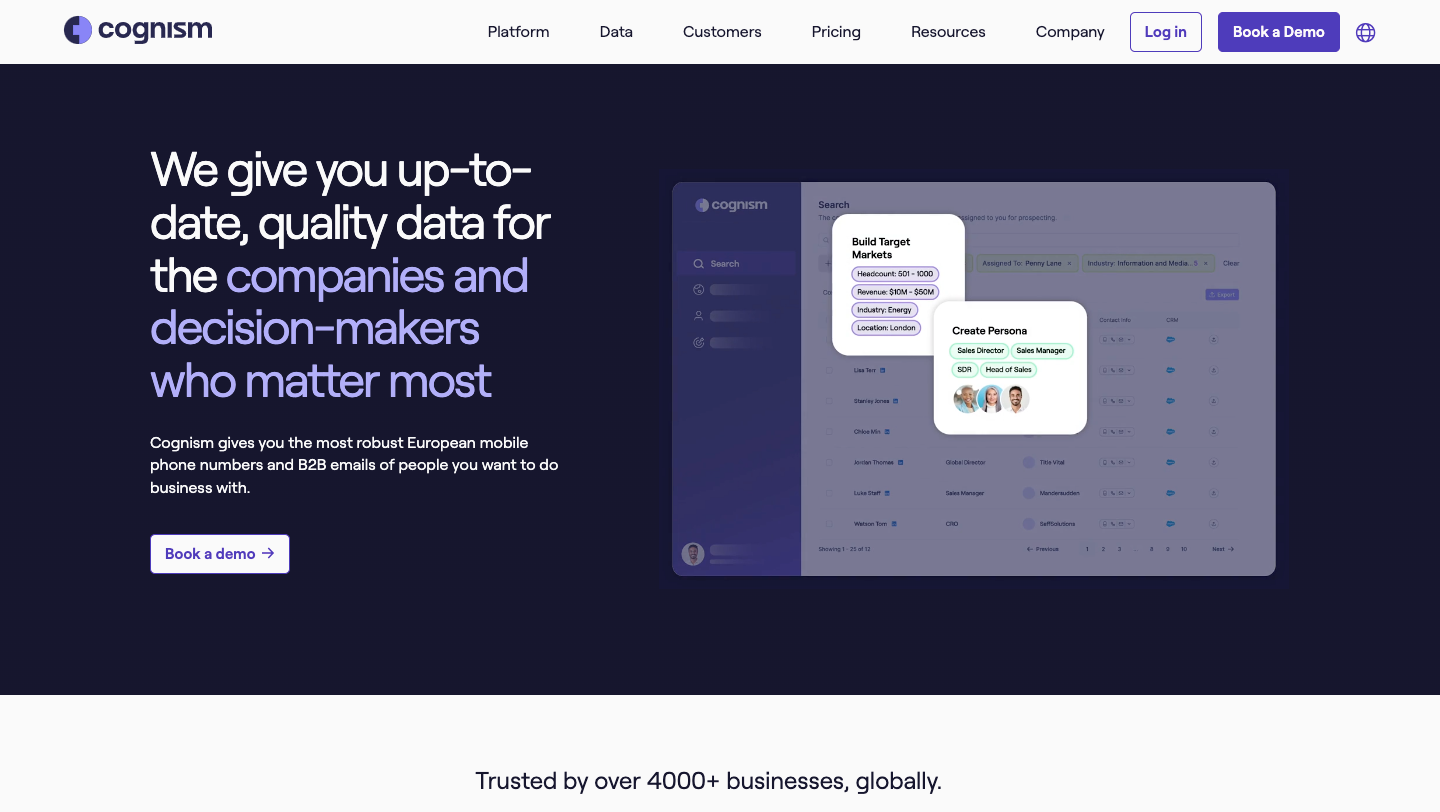
Cognism is built for GTM teams targeting EMEA — especially those navigating GDPR and prioritizing compliant, mobile-verified outreach. It’s one of the few data providers where privacy isn’t just a legal checkbox — it’s baked into the product.
Sales teams get access to Diamond Data® (mobile numbers verified at source), firmographics, and Bombora-powered intent — all while meeting regional compliance standards. It’s particularly useful for high-volume, phone-first outreach in regulated industries.
Pair it with Default, and those leads flow directly into your CRM — enriched, routed, and owned — without risking duplicate records or manual handling.
Key features
- Mobile-verified phone numbers: One of the most reliable sources for mobile outreach, especially in EMEA and the UK.
- GDPR/DPA compliance: Data is fully privacy-aligned with regional regulations, backed by a compliance team.
- Integrated intent signals (via Bombora): Topic-level behavioral tracking layered over firmographic data.
- Chrome extension + prospecting UI: Search, enrich, and connect from LinkedIn, CRMs, or websites in real-time.
Pricing
Note: Cognism’s pricing is 100% custom and depends on your team size, usage, and add-ons. To get a tailored quote, you’ll need to fill out their pricing request form on the website.
Where Cognism shines
- Compliant mobile-first outreach in EMEA: Ideal for sales orgs needing accurate contact info and privacy assurance.
- Bundled contact + intent data: Cuts down tech stack complexity.
- Trusted in regulated industries: GDPR-safe workflows are built-in, not bolted on.
Where Cognism falls short
- Limited brand footprint in North America: Stronger EMEA traction.
- Bombora intent not deeply embedded: Intent layer is additive, not native to the platform.
- Needs a workflow engine: You’ll still need Default to route, qualify, and activate data across your CRM or MAP.
Customer reviews
“I like Cognism because it helps me bypass gatekeepers and reach the right people directly. Having access to contact details for C-suite execs and EAs makes pitching faster and more effective.” - Frankie W., verified G2 reviewer
“We have really put it through it's paces, during which we've come to realize Cognism is still very far from a finished product. The search function is clunky and not great. It is pretty badly designed, and isn't that intuitive.” - verified G2 reviewer
Who Cognism is best for
- EMEA-focused sales and RevOps teams: Especially those requiring mobile data and GDPR compliance.
- Revenue leaders: Prioritizing regulatory-safe pipeline generation.
- Outbound-heavy orgs: Looking to unify data, enrichment, and targeting in a single source.
Apollo.io: Best for sales teams combining intent with outbound prospecting
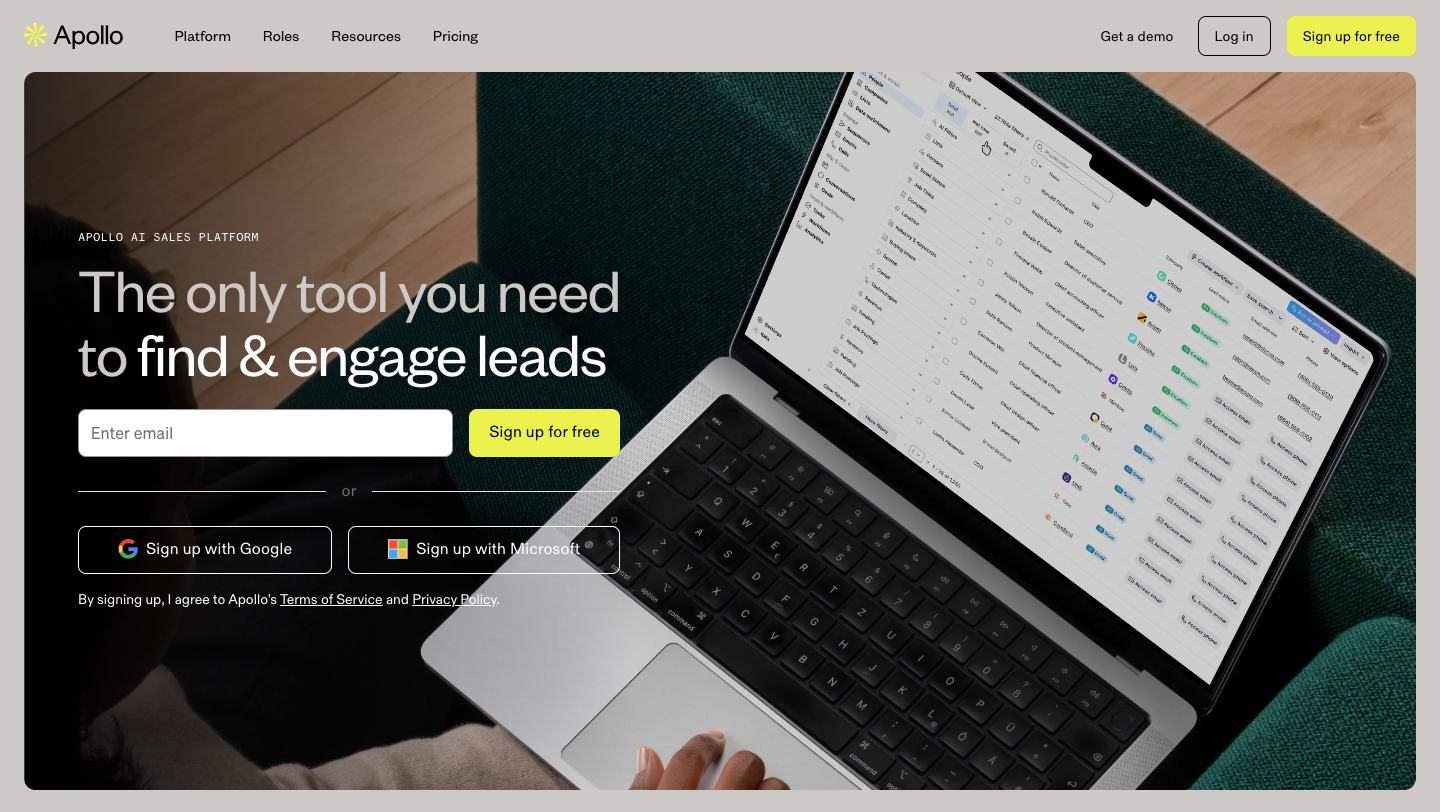
Apollo is built for outbound teams that need to move fast. It combines prospecting, enrichment, and sequencing into one interface — so reps can find, qualify, and engage leads without jumping tools.
The intent signals are lighter than ZoomInfo or 6sense, but still useful for identifying accounts showing interest based on tech stack, role, or activity. And for the price, it’s hard to beat as a full-cycle SDR engine.
Add Default to the mix, and you’ve got automated routing, CRM sync, and rep handoffs — all running in the background, without slowing anyone down.
Key features
- Intent-based filtering: Identify accounts showing buying behavior and overlay filters like tech stack, industry, and role.
- Built-in sales engagement: Launch multi-channel outreach (email, calls, LinkedIn) directly inside Apollo.
- Real-time enrichment: Auto-fill lead profiles with firmographics and push to your CRM.
- Chrome extension: Enrich and prospect directly from LinkedIn or company sites.











.png)


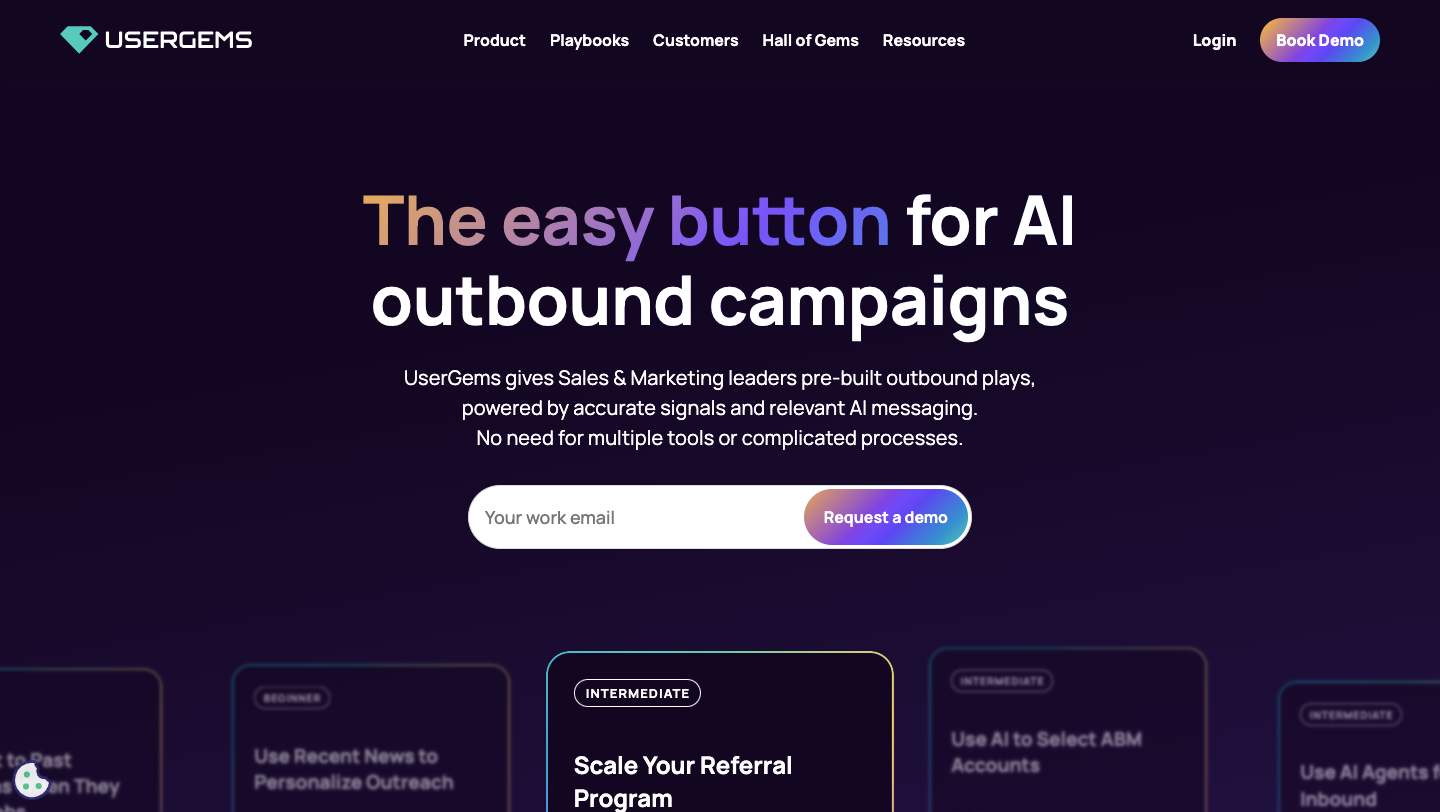
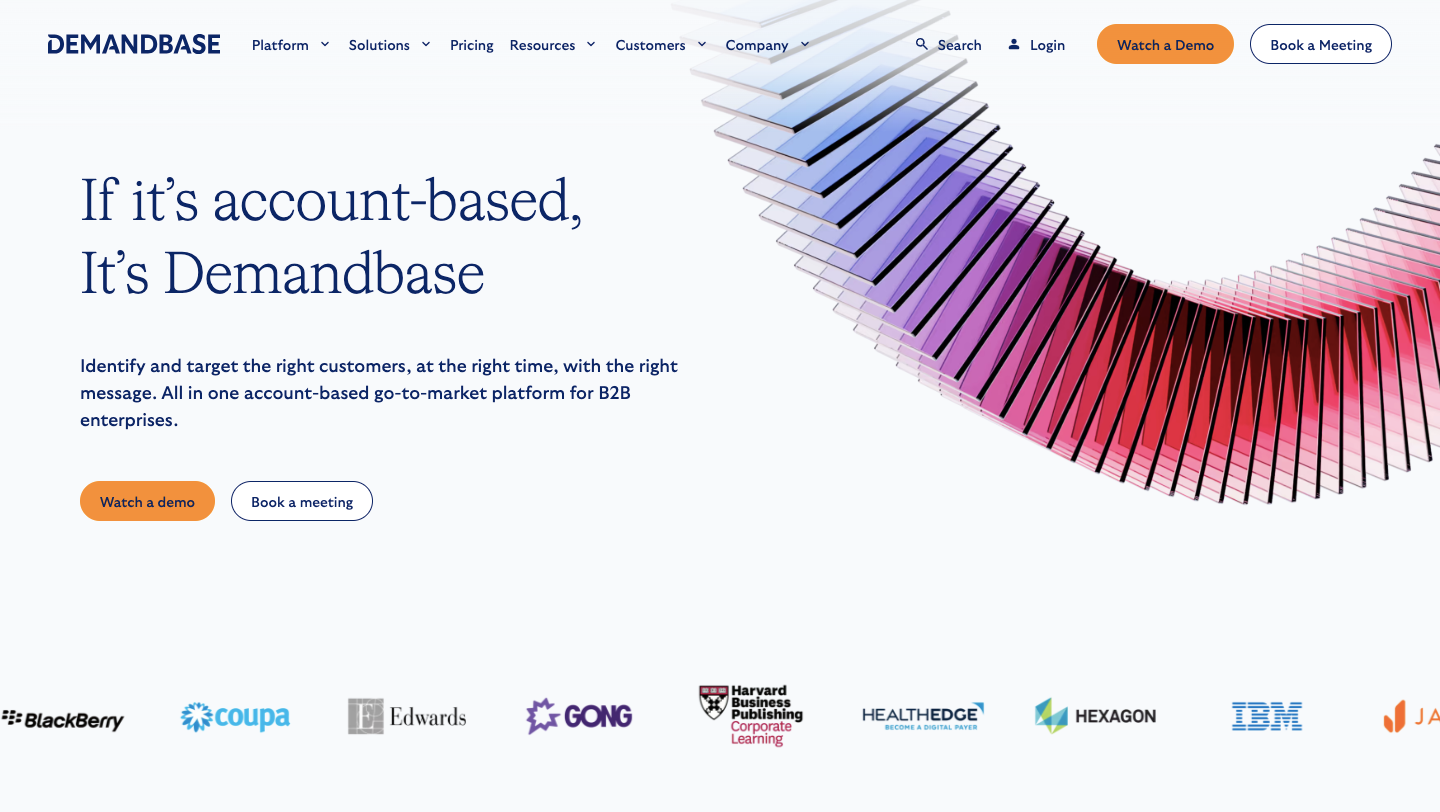
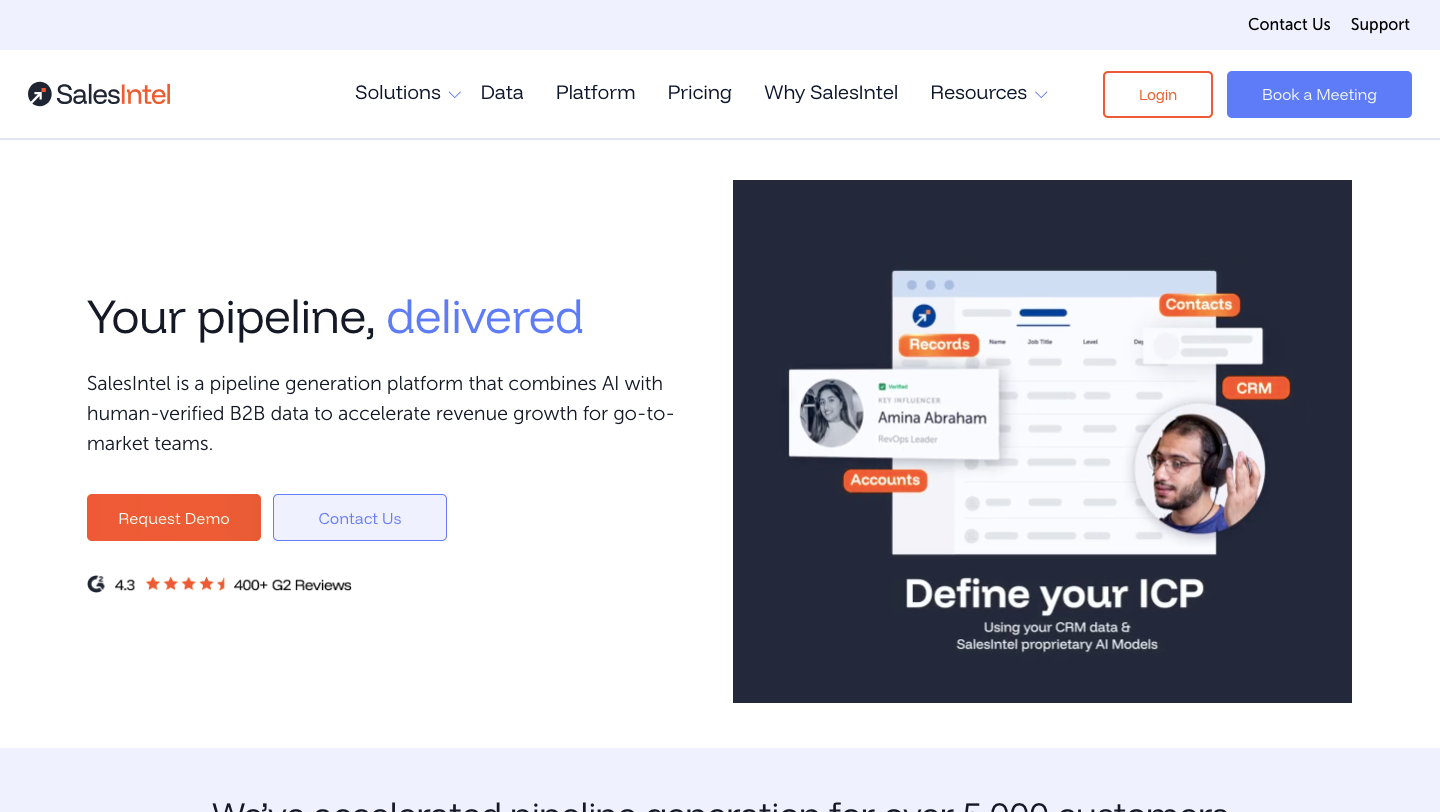
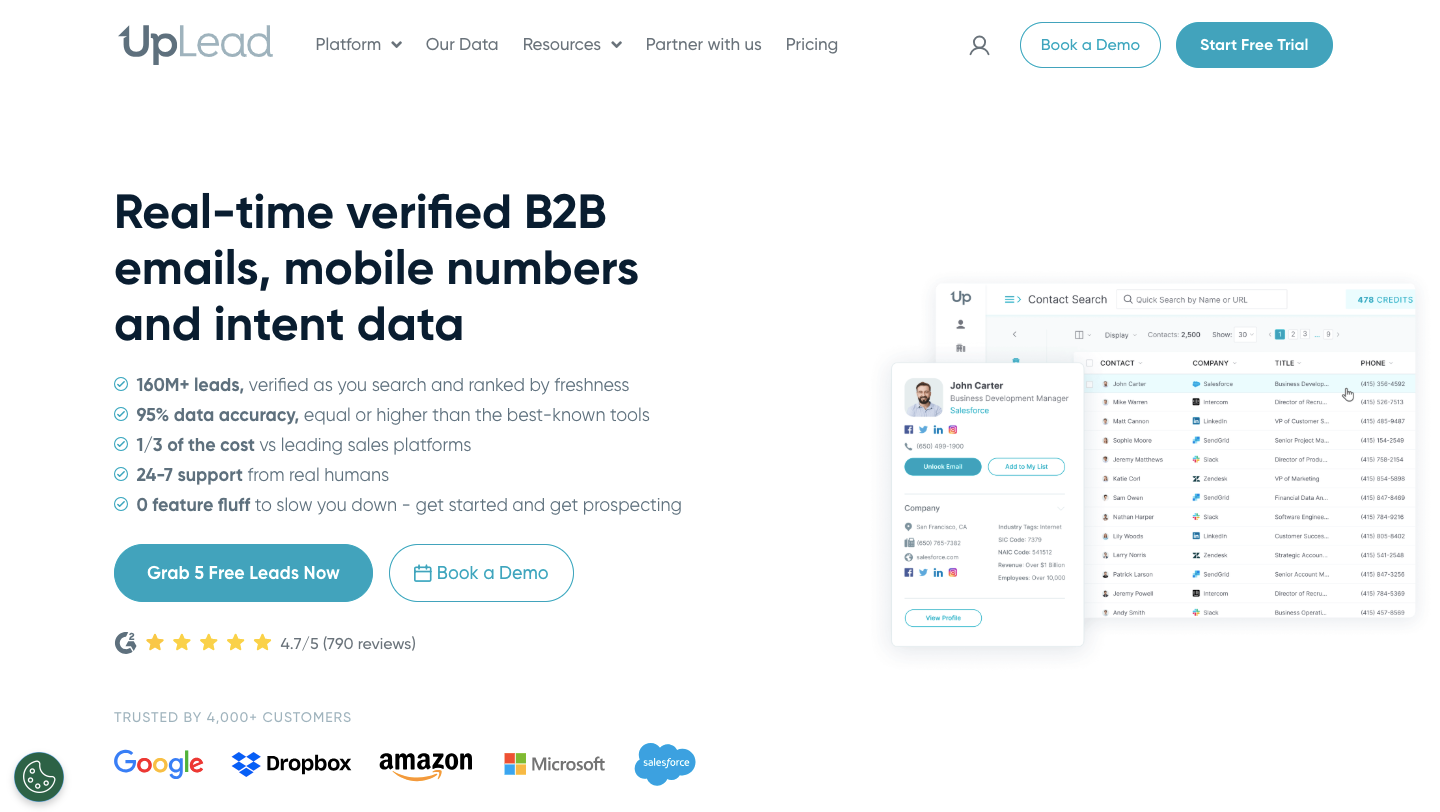
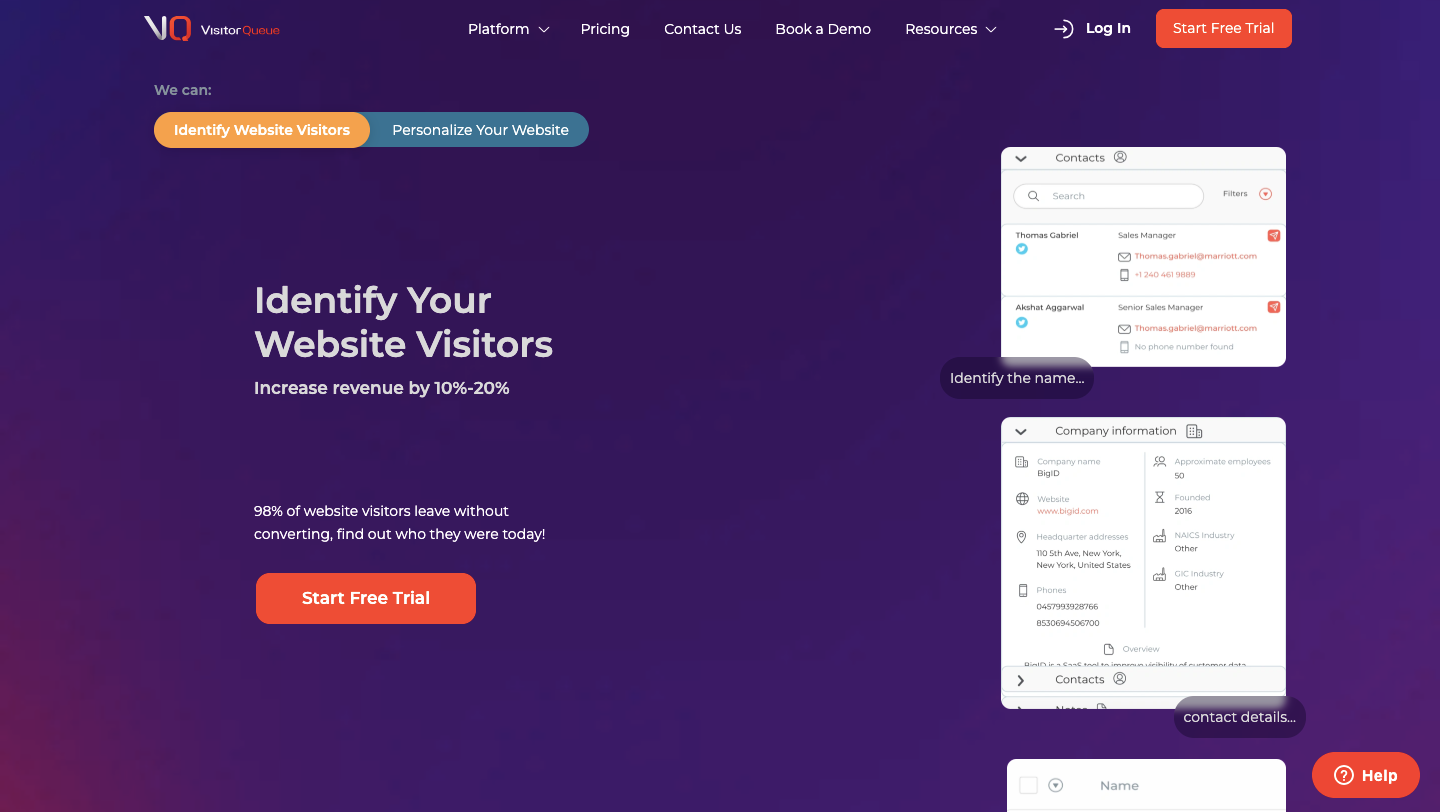
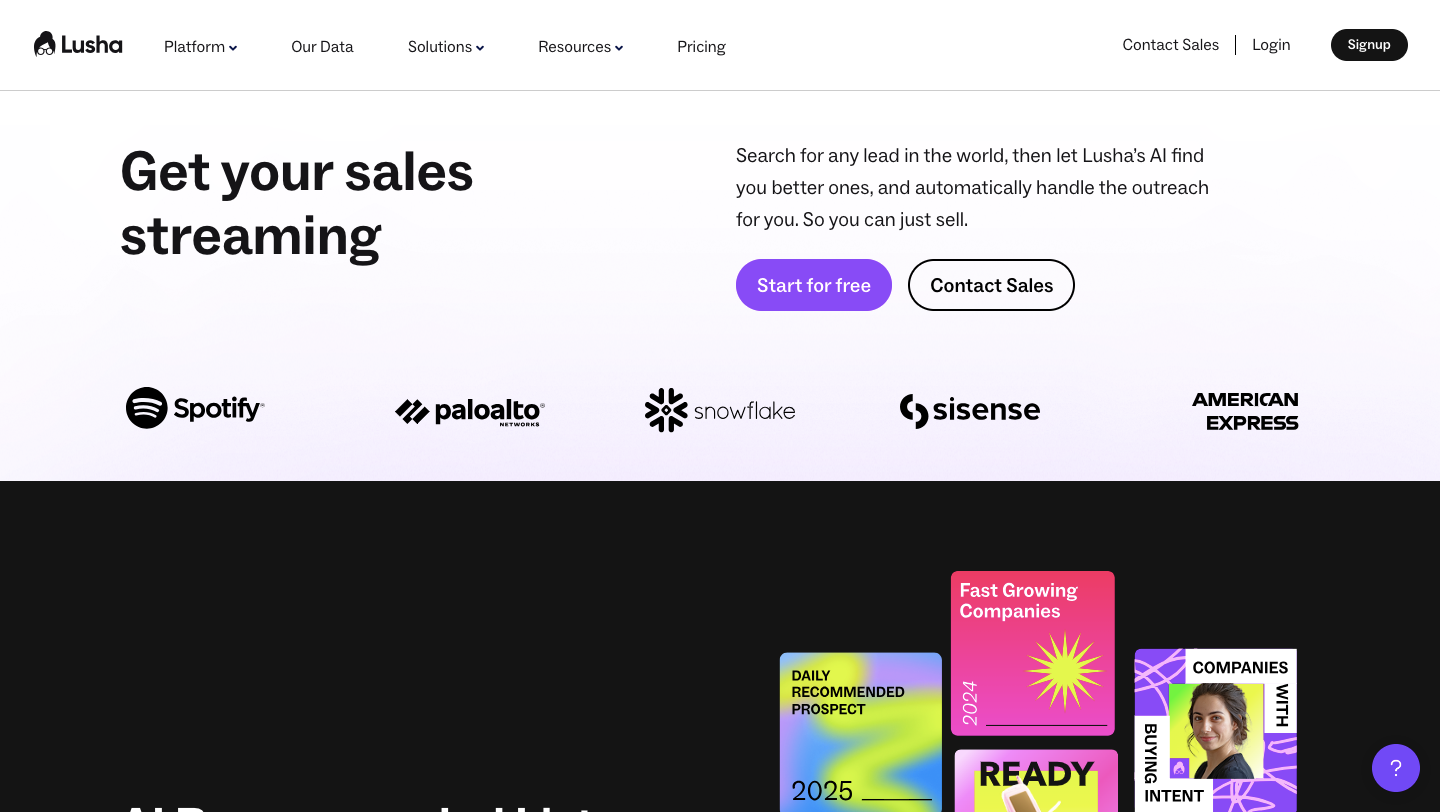
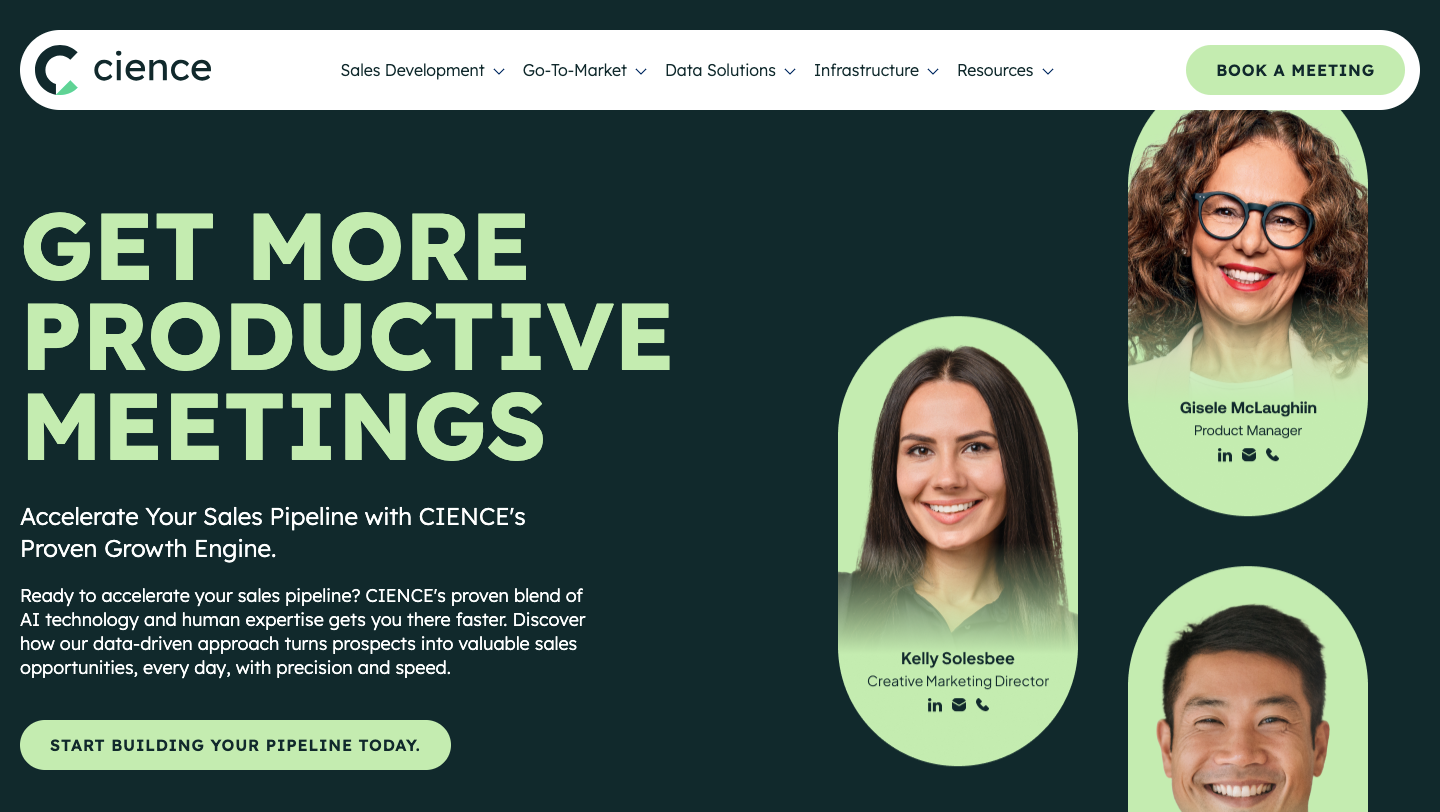
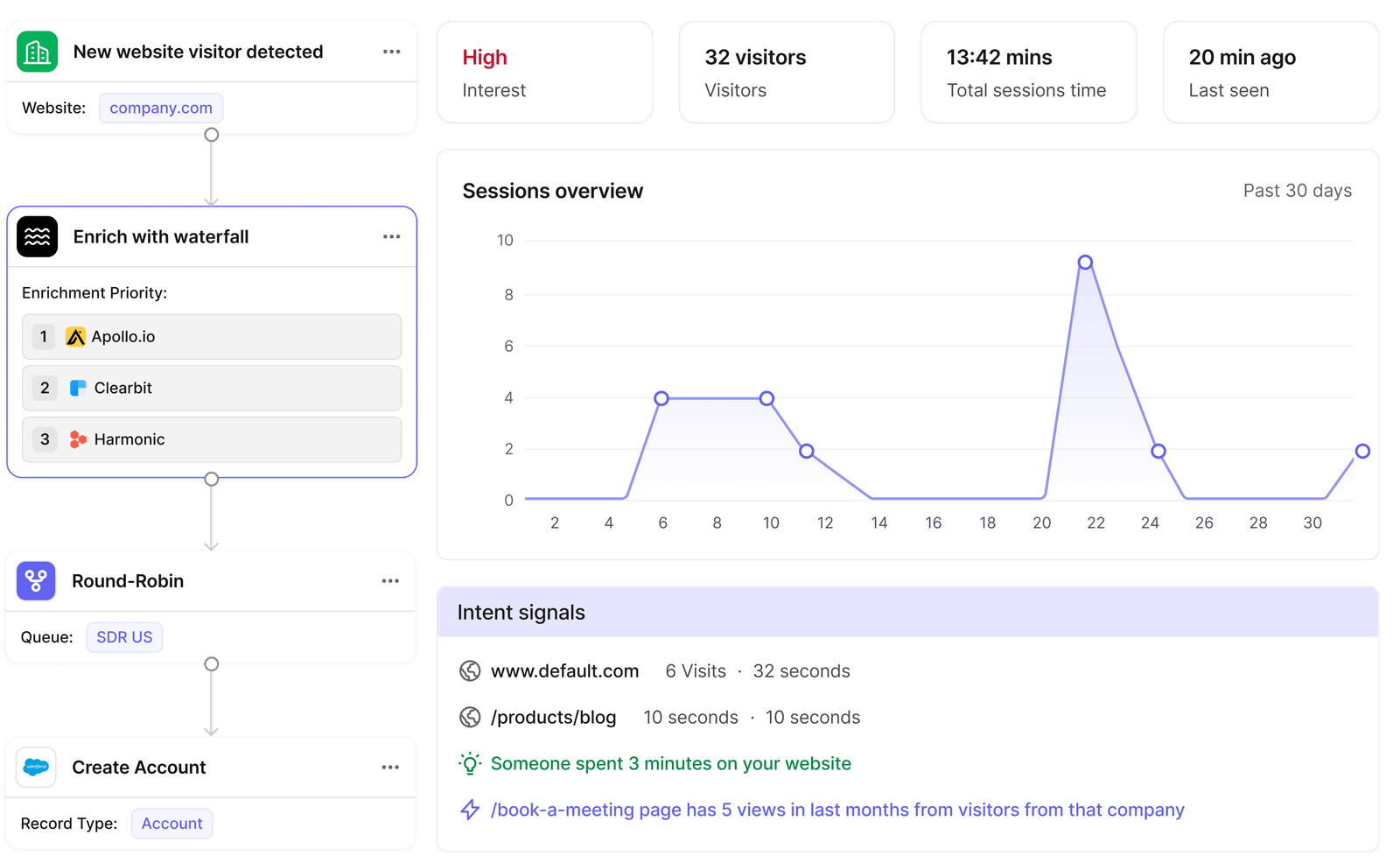
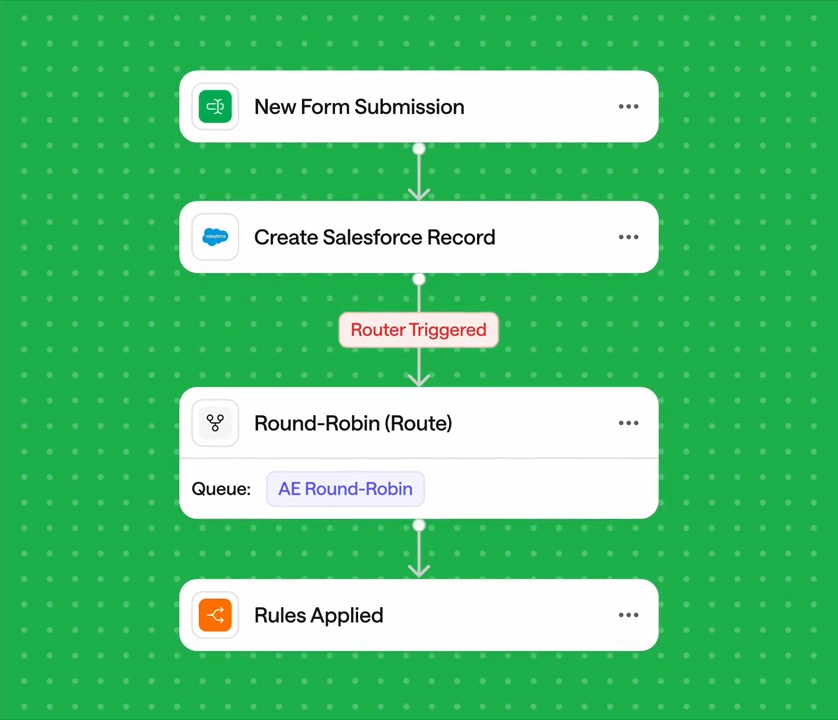
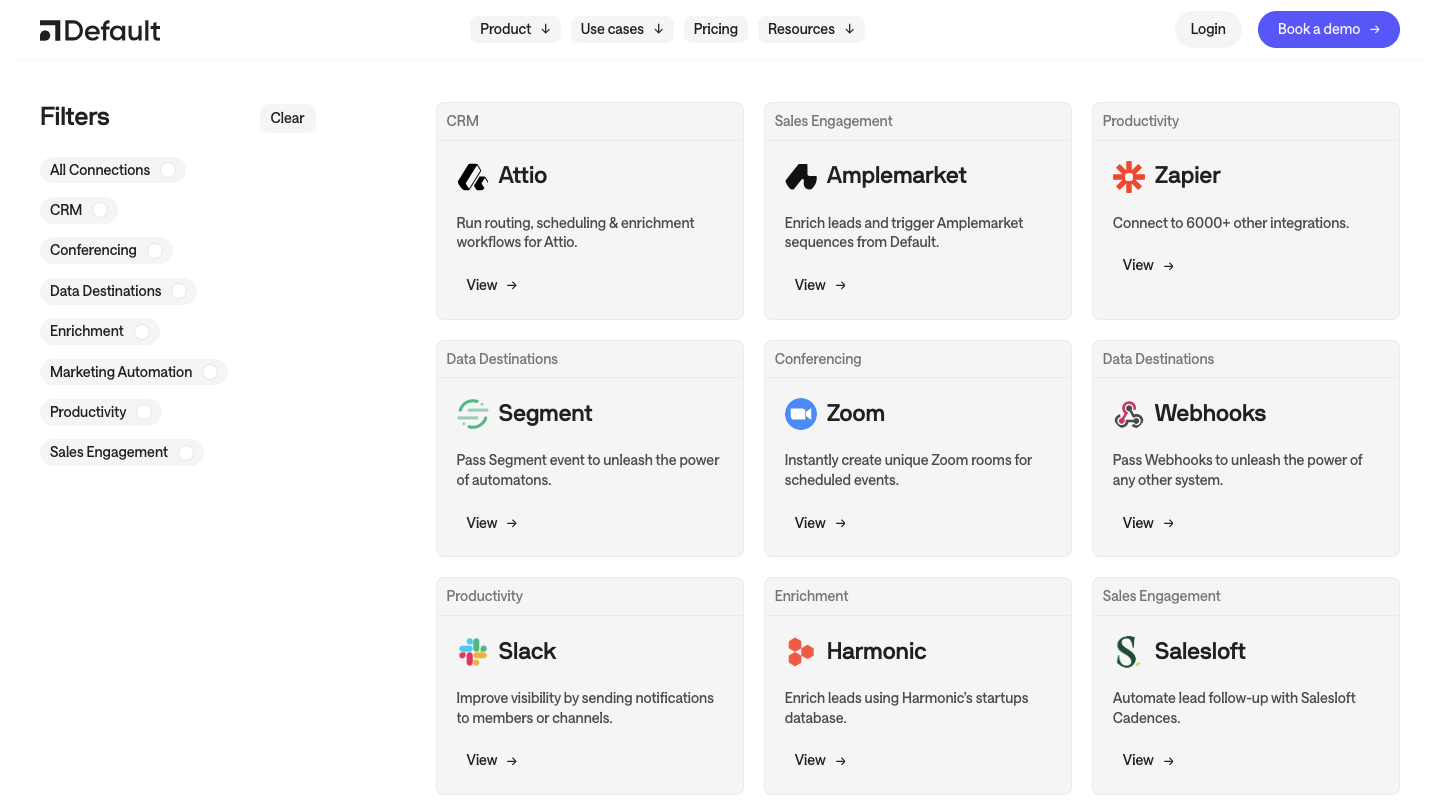
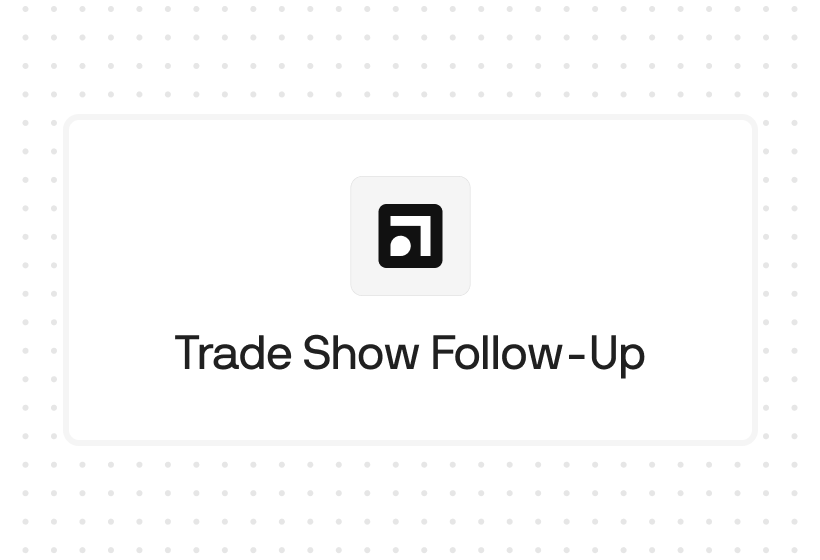
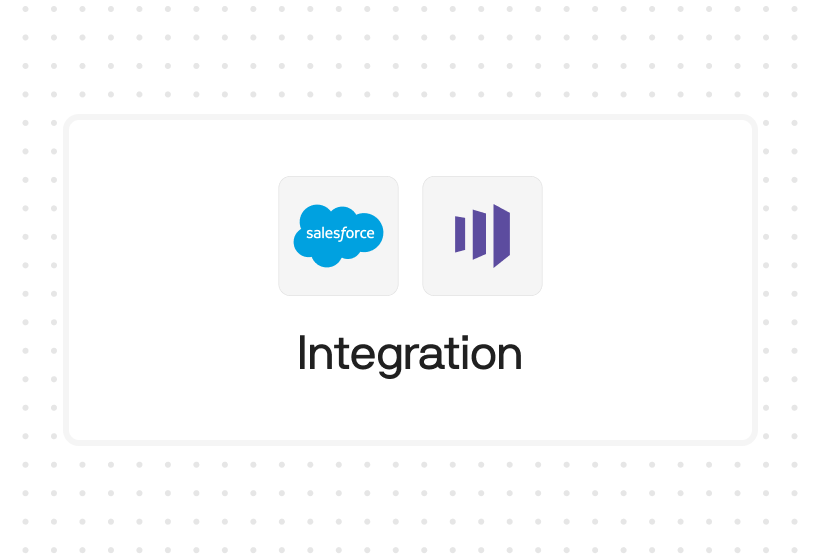




%201.svg)



.svg)





%201.svg)



%201.svg)

